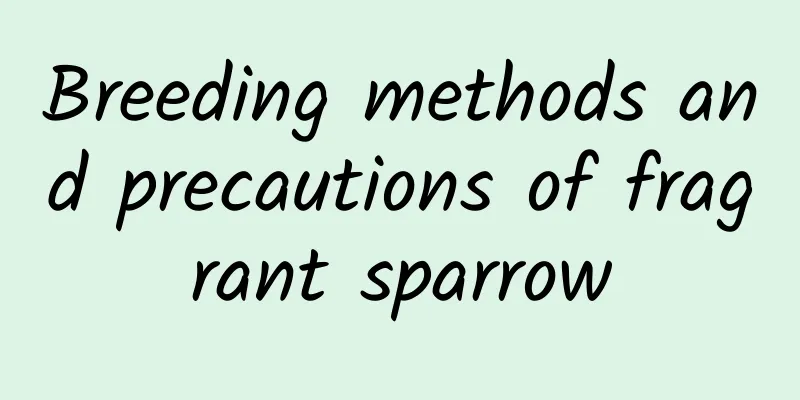Breeding methods and precautions of fragrant sparrow

|
The scented finch is easy to raise and has a strong ability to adapt to the environment. It is suitable for growing in a warm and humid environment. It has a relatively long flowering period and will not be greatly affected by the high temperature and exposure in summer. It also has a relatively high ornamental value. How to breed fragrant bird1. Soil The scented sparrow has relatively low requirements for soil and is suitable for growing in a full-light environment, or in slightly shaded sandy soil with strong drainage. It grows best in alkaline soil. 2. Lighting After planting in the summer, the Fragrant Woodpecker needs to be shaded. After the seedlings have grown, they can be gradually exposed to the light. In the summer noon, they should be avoided from exposure to the sun and appropriate shading measures should be taken. 3. Watering The Fragrant Woodpecker is suitable for growing in a humid environment. During the cultivation process, watering should be carried out according to the dryness and wetness of the soil, but water should not accumulate in the pot, otherwise the roots will rot. 4. Temperature During the growth process of the Fragrant Woodpecker, the suitable temperature for growth is 26-28 degrees. It can withstand high temperatures above 35 degrees for a short time. When the temperature is too high, ventilation or spraying can be used to cool it down. Precautions for caring for Fragrant SparrowWhen caring for the Fragrant Woodpecker, you need to pay attention to the number of times you fertilize, because the Fragrant Woodpecker likes fertilizer. You can apply a small amount of fertilizer 10-15 days after potting it. You only need to apply fertilizer once every 15 days or so. You can also apply decomposed organic fertilizer into the soil as base fertilizer. |
>>: Advantages and disadvantages of carousel roses
Recommend
How to prune camellia
Pruning methods There are many ways to prune came...
How to fertilize the hanging bamboo plum
Fertilization method of hanging bamboo plum In te...
Why is Clivia a famous flower?
1. Reasons Clivia is originally an African flower...
How long does Phalaenopsis bloom?
1. How long is the flowering period? Relatively s...
Breeding methods and precautions of Luanfeng Jade
form The top of the Luanfeng Jade is short and po...
Where does lotus root grow? Where does lotus root usually grow?
Where do lotus roots like to grow? Lotus root gen...
How to grow Zephyranthes so that it will bloom out of the pot?
Zephyranthes is a plant of the Amaryllidaceae fam...
Balcony vegetable planting: choosing vegetables according to orientation
Closed state Closed The most important factors af...
How long can yacon be stored and how to preserve it for a long time
1. How long can it be stored? How long it can be ...
When do Phalaenopsis orchids bloom?
1. When do Phalaenopsis orchids bloom? The flower...
Can the fortune tree be planted in the yard?
Can I plant a money tree in my yard? The money tr...
The role of various flowers and plants
Nasturtium It can clear away heat and detoxify, n...
The growing environment and local conditions of hyacinth
Hyacinthus growth environment and conditions Hyac...
How to take care of the newly bought cyclamen
1. Don’t change the pot Don’t rush to repot the c...
How often should aloe vera be watered in summer?
How often should aloe vera be watered in summer? ...









